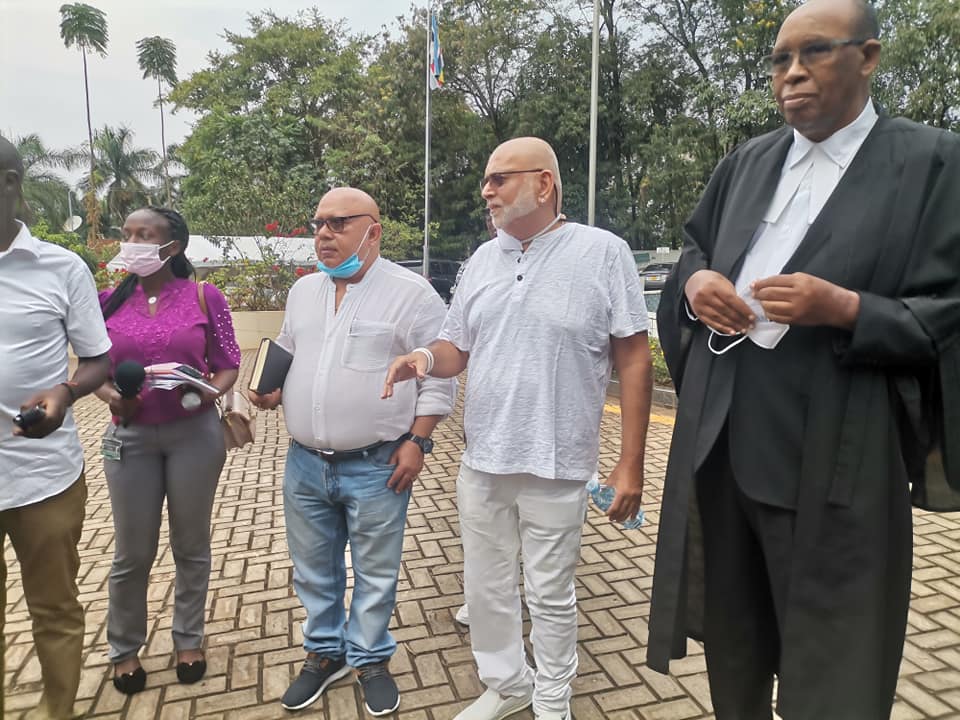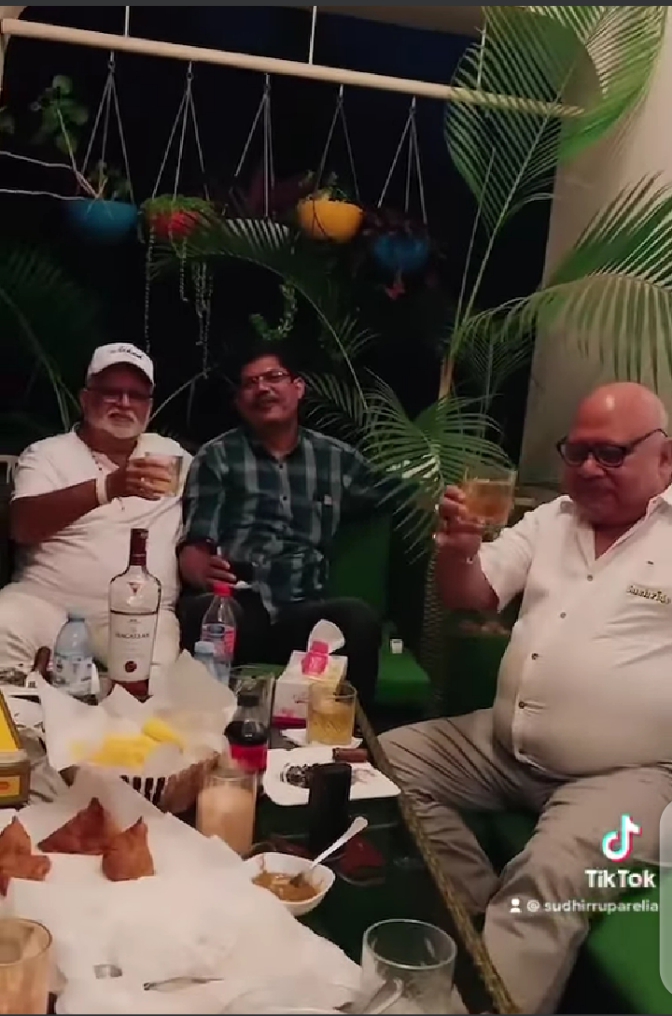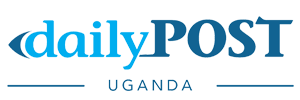IN HISTORY: Over time, the Court has decided on a number of high profile cases. In a series, Daily Post Uganda looks back at some of the attention-grabbing cases that have visited the court room.
Many Ugandans have been wondering who could be the Short chubby Indian man always in the shadows of City property mogul Sudhir Ruparelia at several public events.
For starters, Sharma Kooky is city businessman of Indian origin who became famous for bad reasons in the early 2000s.
Sharma and his brother Kumar were sentenced to death by the High Court of Uganda for killing his wife. Sharma claimed that his wife was having an affair with the houseboy. She was beaten badly and electrocuted until she eventually passed away. The Indian community tried to cover the whole murder but the Ugandan police managed to intervene and have him and his brother arrested for the murder.
What exactly happened;
For Sharma Kooky’s household, December 23, 1997 had begun like any other normal day. The breadwinner of the home, Kooky—husband to Renu Joshi—had left their house on Plot 43/45 on Martin Road in Old Kampala at about 9am for his shop just across the road where he was helped by his young brother Davinder Kumar. Kooky only returned home at 2.30pm to be served lunch by their cook identified as Raju.
Dark Tuesday
Kooky returned to his shop at 3pm and only went back to the house after midnight. However, something seemed amiss that night. Next to the Kooky’s was the family of Mr Deo Rurebwa Twine who lived with his wife Margaret and daughter Lillian Busingye. According to Lillian, in the dead of the night she heard two male voices and cries of a woman emanating from Kooky’s residence. She also said she heard sounds of banging and beating. The female voice cried for a long time and when they decreased, Lillian resumed her sleep.
That same Tuesday night, Mr Twine heard the noise and woke up his wife, Margaret, telling her: “Your friend is being beaten.”
The following morning, as Ms Twine left for work at her drug shop, two things caught her attention. In Kooky’s house, a mattress had been laid in the corridor, covering a window and in the compound where stood two cars was a mechanic. This observation would later prove vital in pinning Kooky in the murder of his wife.
That Wednesday, information began trickling in that Joshi, Kooky’s wife had died. Concerned about the news, area LC1 chairman Abdi Jamal, decided to find out what was going on. He went to Kooky’s house only to find the corpse dressed up to the wrists and ankles—with only the face exposed. Kooky claimed his wife had died of malaria and he was in a rush to cremate her.
Unconvinced, Jamal blocked the rushed cremation and dashed to the nearby Old Kampala Police Station. Officers who came to examine the body noticed bruises and quickly sensed foul play. They treated the death as a murder and decided to search the house. To their shock, they found Raju, the cook, lying unconscious. His limbs were broken and he had a swollen mouth. Police took him to Nsambya Hospital where he was admitted. But to greater shock, when they returned two days later, Raju was nowhere to be seen. Until today, he has never been found.
Post-mortem
At about 1pm of the same day, Joshi’s body was taken to Mulago Hospital where Dr Martin Kalyemenya, a pathologist, carried out an autopsy. His report noted “multiple bruises caused by electric action or acid”. When he opened up the body, he noticed the liver and spleen were coloured slightly differently from normal. He got a piece of liver, spleen, kidney and brain that he sent to the Government Chemist, Mr Emmanuel Nsubuga, to study. The chemical analysis by Mr Nsubuga found some amounts of acaricide poison in all the organs he was given.
However, there was general dissatisfaction about Dr Kalyemenya’s opinion and five days later, on Monday December 29, 1997, Dr H.R. Wabinga, the head of the Pathology Department of Mulago Medical School carried a second autopsy. He also noticed the multiple bruises and electric burns. His conclusion: Joshi had died of shock due to punch out abrasions.
Armed with this evidence, the Director of Public Prosecutions sanctioned murder charges against Kooky and his brother Kumar in what was a five-year legal contest fought in three courts and before nine judges.

Sharma Kooky accompanying his friend Dr Sudhir Ruparelia during Crane Bank case hearing
The defence
Kooky told court that indeed December 23 had been a normal work day. He was in the shop and later supervised construction works at a nearby flat. He says when he finally returned home in the dead of the night, he found his wife seated on the bed with hands folded and held on the stomach. She reportedly turned down a proposal that she goes to see a doctor. This went on for 20 minutes, where she visited the toilet twice. Kooky decided to jump into bed and he told court he was woken up at about 4am by his wife’s cries. She was sweating. Kooky said he called Raju, the cook, four times but he did not respond, prompting him to telephone Kumar, his brother. Kumar went and brought Dr Prakash Patel, who arrived at about 5am and pronounced Joshi dead.
The doctor testified that he saw a packet of Metacalfine tablets near the deceased. Kooky then asked his brother to inform the police and LC1 chairman. Kooky also telephoned Mr Raju Taylor, the chairman of the Indian Community, who made arrangements to have a priest prepare Joshi’s body for cremation. It was at this point that police arrived and arrested Kooky. The crowd that had gathered, shouted in unison, “Kooky has killed his wife!”
Like Kooky, Kumar denied a hand in the killing, repeating nearly the same tale to court.
The trial
During the trial in the High Court and the appeal court, Ms Twine’s evidence of what she had heard the fateful night was the thrust of the prosecution evidence. The defence, however, said Ms Twine’s identification of the accused by their voices was inadequate. Defence also argued that the medical evidence on the cause of death was inconclusive since that night of the murder, there was load-shedding (casting doubt on the electrocution theory).
The defence also reasoned that Joshi could have been poisoned since a substance acaricide had been detected by Mr Nsubuga, the chemist in the body organs sent to him by the first pathologist Dr Kalyemenya. They used this to argue that the deceased had committed suicide.
In the High Court, the trial judge (who was he?) ruled out the options of malaria and suicide. Relying on Dr Wabinga’s evidence (second pathologist) and Ms Twine’s submission, the judge found both Kooky and Kumar guilty of murder and sentenced them to death.
Supreme Court
The Court of Appeal upheld the High Court ruling but Kooky, unhappy with the ruling, instructed his lawyers to go to the Supreme Court—the final court. Mr P.S Ayiguhugu and Mr Mubiru Nsubuga represented him. Mr Akampurira represented Kumar. They again advanced four grounds (for Kooky) and three grounds for Kumar. However, each party dropped one ground.
Key in the appeal was that the two courts had erred in accepting Dr Wabinga’s evidence against that of Dr Kalyemenya. Defence argued that the possibility of poisoning was high—backed by findings of the first pathologist and the government chemist. But the Justices, in response, dismissed the notion that Joshi could have been sick. Pointing to the fact that she had looked fine the entire day and noting discrepancies between the statement Kooky had given to police immediately after arrest and later in court, the judges rejected that ground of defence.
The judges also poked holes in the evidence of Dr Kalyemenya (noting that he seemed unsure of the cause of death and was a fresh graduate) and Mr Nsubuga (for failing in his original report to indicate how much poison was found in Joshi’s organs). They agreed with the more seasoned Dr Wabinga that Joshi had died of shock due to electrical burns. On this basis, the final court upheld the murder charges against Sharma Kooky.
Anti-climax as Kumar is set free
In defending Kumar, his lawyer Akampurira, argued that evidence placing him at the crime scene was not conclusive. To convict Kumar, the two courts had based on Ms Twine’s submission that she had heard Kooky and Kumar talk as they beat Joshi. Akampurira argued that Ms Twine could have erred seeing that a wall separated the two families, Kumar lived a distance away from the Kookys and that Kooky’s house had a ceiling, making voice deciphering difficult.
The justices agreed that Ms Twine could have made mistakes in identifying Kumar. They ruled:
“It can be said that in modern living in urban centres, life is full of bustle and hustle and that generally neighbours who are not of the same race or culture may not regularly talk to each other.”
They ruled that whereas Kumar might have looked panicky the morning after the murder that alone was not enough to prove guilt. Prosecution, they said, had failed to prove beyond reasonable grounds that Kumar, who had raised an alibi, had been at the scene of murder.
And on April 15th, 2002 as Kooky was led back to Luzira Prison to await the hangman’s noose for killing his wife, his brother Kumar walked to freedom. Of course, the noose never tightened and following a presidential pardon, Kooky is now a free man.

Sharma Kooky (right) as a free man is chopping life like nothing happened before.
Utility: The powers to forgive convicts
Article 121 of the Constitution gives the President powers to pardon convicts on advice of an Advisory Committee on the Prerogative of Mercy chaired by the Attorney General. Sub-section 5 of this Article directly addresses the question of death row convicts. It states:
Where a person is sentenced to death for an offence, a written report of the case from the trial judge or judges or persons presiding over the court or tribunal, together with such other information derived from the record of the case or elsewhere as may be necessary, shall be submitted to the Advisory Committee on the Prerogative of Mercy.
Before Kooky, a similar presidential pardon was in 2009 when President Museveni set free Chris Rwakasisi, the former security minister in the Obote II regime. Earlier, Abdullah Nassur, a much-feared governor of the central province during the Amin era, had also received similar reprieve.


